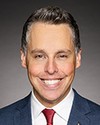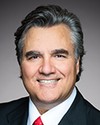Thank you, Mr. Chair. I'll be careful to watch for the coloured paper.
Let me do as others have done and talk a little about some strategic transportation assets that are important to my constituency and my region. I want to refer to the supply chain task force that was established following the summit. The minister spoke to that.
In my region of Hamilton, Ontario, we have the largest dedicated cargo airport in the country and one of the busiest ports on all of the Great Lakes. It's the ninth or 10th largest city in the country. From what I understand from conversations with people at the city as well as the airport and others, there is no direct representation of Hamilton on the task force. Correct me if I'm wrong on that.




